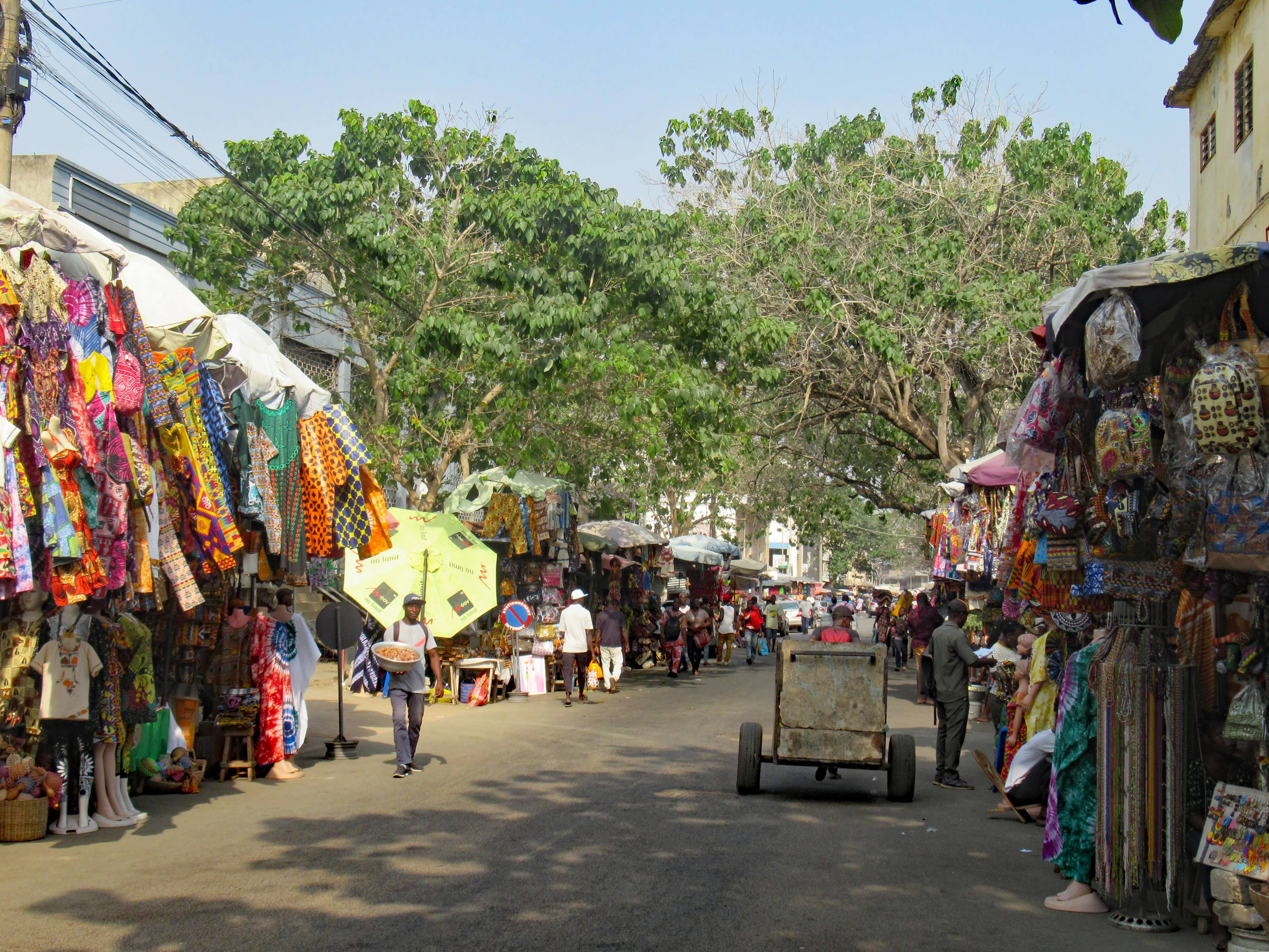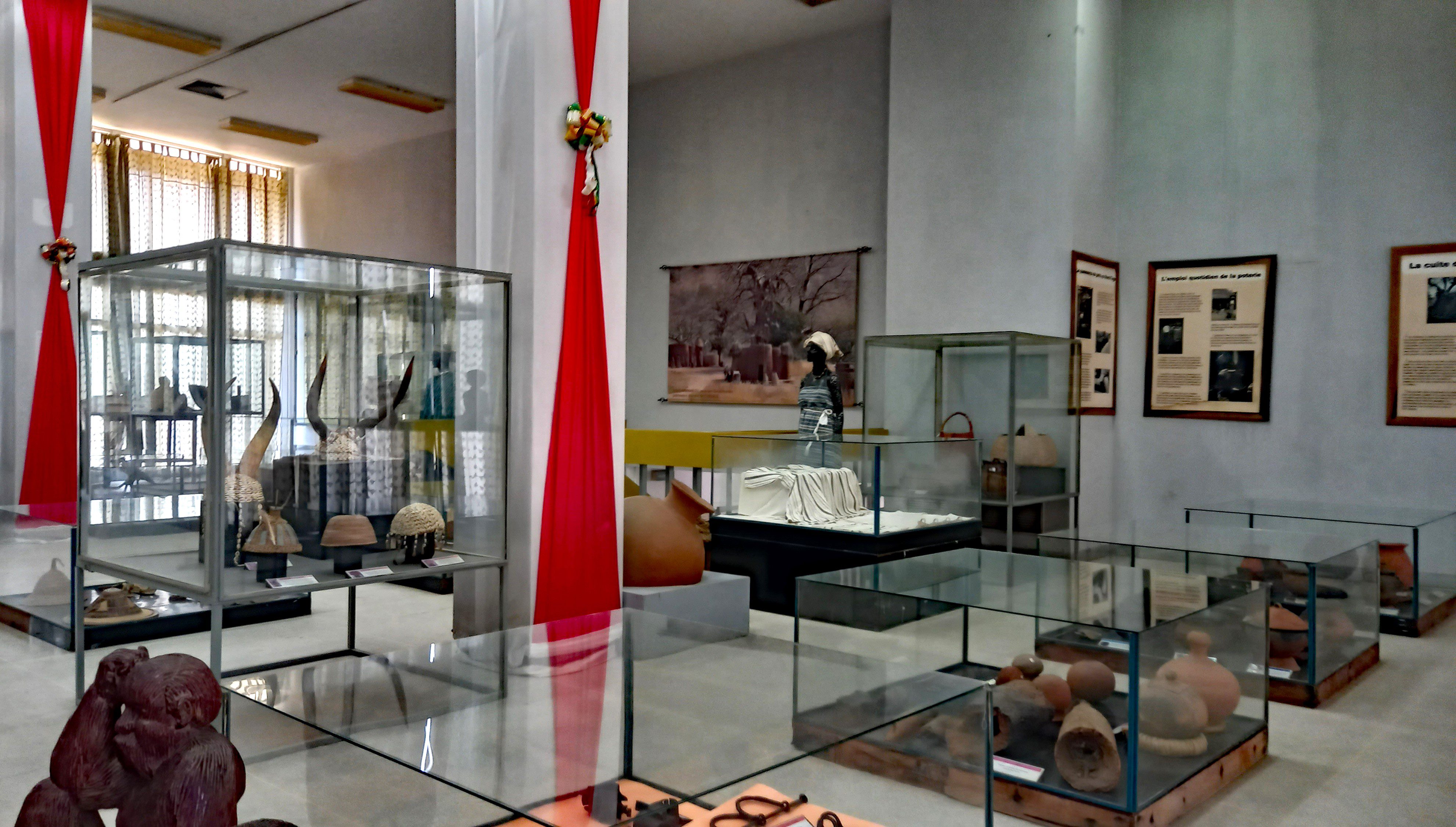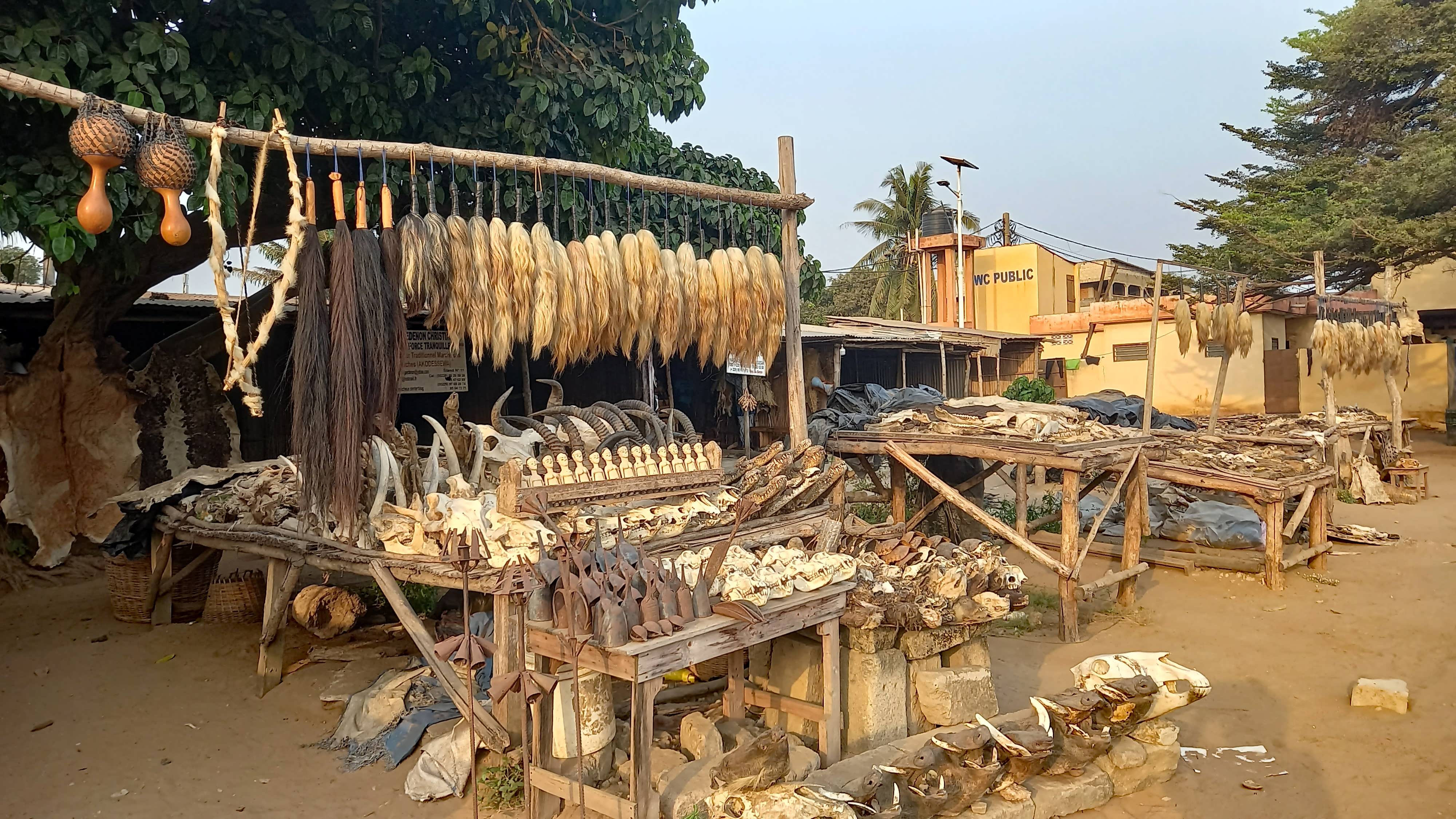Togo’s capital Lomé is often referred to as the ‘Pearl of West Africa’ due to its broad boulevards and cosmopolitan atmosphere and our day of sightseeing took in several sights.
GRAND MARCHE
The market occupies an entire city block, and the majority of vendors were women and children offering a huge variety of goods, which could be found in similar markets. However, what made this one different, was the story of the Nana Benz, Togo’s famous and wealthy businesswomen – Nana being a form of respect and politeness, whilst Benz signified the Mercedes they drove. In the 1970s, the Nana Benz became a cornerstone of the country’s economy, positioning Lome as the centre of textile distribution and dominating the trade in wax prints from Holland, Belgium, France, and England. In the late 1970s and early 1980s, it was estimated that 40% of the country’s commercial business was in the hands of the Nana Benz and it was no surprise that many of the stalls sold the colourful cloth used in traditional outfits.
THE SACRED HEART CATHEDRAL
Opposite and virtually now surrounded by the market, stood the Catholic Sacred Heart Cathedral. The former German Protestant Church was built in just over a year (April 1901 to September 1902) by the German colonial authorities, and is still often referred to as the German Cathedral. It became one of the iconic buildings of the new capital of Togo. Built in the Gothic style it was distinctive with its cream and terracotta décor on both the outside and inside, where many worshippers appeared to be sleeping in the heat under the pretence of praying. Around the back was a large statue of the Virgin Mary built into a wall of rocks and lots of marble benches.
NATIONAL MUSEUM OF TOGO
The National Museum, opened in 1975, was not the dry and dusty museum we anticipated. Located within the grandeur of the Congress Palace, near Independence Square, it was an architectural gem in its own right. We were the only visitors and a pleasant young man with good English showed us the two sections: one devoted to Ethnography and the other history.
In the ethnographical section various display cases contained exhibits related to a particular facet: ironware, farming tools, weapons, clothing, slavery, and pots.
The historical section had many portraits of prominent Germans and the protectorate document they signed in 1884 and French personnel, as France was allocated the country after the end First World War. All Togo Presidents since independence were depicted and their stories explained, which was a little like the wives of Henry VIII: assassinated, deposed, died in office, and resigned. There were also maps showing the parts of Togo handed to the British and Ghana and also to Benin, which was obviously a sore subject.
AKODESSEWA FETISH MARKET OR MARCHE DES FETICHES
‘This visit is optional as some people prefer not to see dried animal parts’ read our itinerary: likewise, continuing to read is optional, particularly for those with a sensitive disposition.
Voodoo thrives in Togo, and the Akodessewa Fetish Market or Marche des Feticheurs is the largest Voodoo market in the world. As it’s a hugely important part of the country’s culture, we felt we must take the opportunity for what we expected to be a remarkable experience.
Before arriving, our guide provided an overview of the market and role of fetish priests. In the olden days, the fetish market would serve as a hospital, doctor’s surgery, and pharmacy. Now people can have physical or spiritual diseases and can either consult a doctor, God, or fetish priest. The latter will check the zodiac, identify the problem, and determine the ingredients for the cure, generally herbs and dead animal parts. These are then turned into medicine which can be either taken orally, bathed in, or rubbed into the skin or scarified marks. The profession of fetish priest is usually handed down within the family.
The market was well organised with stalls laid out in a circle around open ground. The huge range of both domestic and wild animal parts looked old and dehydrated and whilst some were hard to identify, we could distinguish bears, big cats, birds, snakes and crocodiles. There were also less controversial small voodoo dolls with pins in them. Surprisingly there was no problem taking photos and our allotted guide showed us round before taking us to meet a fetish priest: they had small huts at the side, with their names and numbers above the doors.
The priest, dressed in colourful tribal clothing, appeared rather young and we learned later that he was standing in for his father who was attending the annual Voodoo Festival in Benin. He rang a bell, asked our names, and then chanted unintelligible words which we hoped was a positive message of good luck before showing us the tools of his trade. The first was a finger sized wooden doll with a hole in the middle designed to bring luck on your travels: you asked for fortune through the hole and then put in a small plug into it and carried it with you. There was a seed from a mahogany tree, to bring luck to couples, a small wooden peg with two prongs designed to ensure couples remained happy together and a leather stuffed pouch with two cowrie shells on the outside which if worn round the neck offered protection. We were then invited to place any fetishes we wanted to buy in an upturned tortoise shell, but declined as we’d been told that bartering was essential, and we didn’t want the hassle for something we didn’t want. We hoped the priest wouldn’t cast a curse on us.
During our day, we tasted our first Togolese food at the La Chunga Restaurant. The buffet dishes were labelled in French which didn’t help as most of them were unfamiliar. After a simple salad start, we were served akume (a porridge made from ground maize and fermented cassava), or as I described it, a white corn gloop turned out from a small ice-cream like tub, gbomo dessi (a spinach sauce) with pomo or cow skin and a third nameless stew made with cow meat, plantain, cassava and cabbage. That night, I chose from the international section of the dinner menu.












